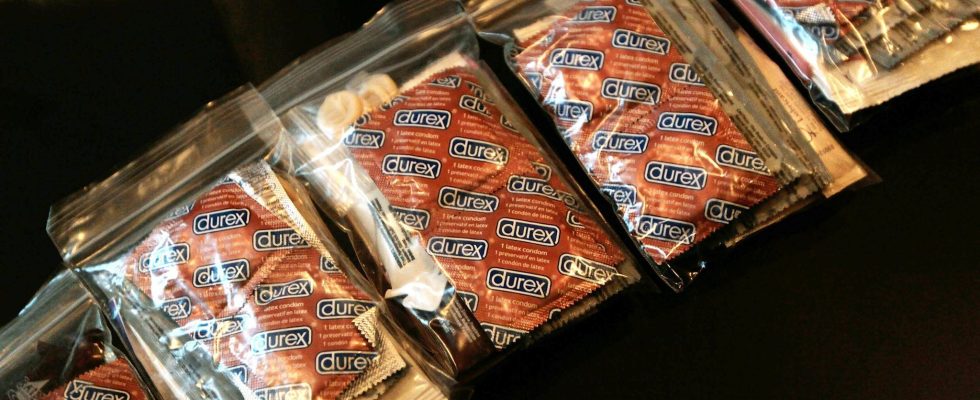During the 2000s, its use became widespread. Today, it tends to decline. This is what reveals a study published in the journal AIDS and Behavior on Tuesday February 27 on the decline in condom use in the United States. Scientists tracked nearly 45,000 men having same-sex relations between 2014 and 2019. They found that the proportion of HIV-negative (non-HIV-infected) men who reported having had sex without a condom in the past twelve months increased systematically in the same group the following year. This share increased from around 68 to 70%, but the increase was even more marked in certain ethnic groups and age categories.
About 1.2 million people were living with HIV in the United States in 2021, according to figures from the US Centers for Disease Control and Prevention (CDC). And although the number of infections has fallen by 12% since 2017, concern is growing over the decline in condom use.
The other side of the PrEP coin
A decline which is partly explained by the generalization of new preventive treatments. This is particularly the case for pre-exposure prophylaxis, better known as PrEP, which appeared in 2012. Administered daily, this antiretroviral medication helps avoid the risk of contracting HIV, the virus responsible for AIDS.
Although the effectiveness of PrEP has been scientifically demonstrated, several specialists are nevertheless sounding the alarm about the repercussions of the generalization of this type of treatment. For the authors of the study, there is no doubt: PrEP has made condom use has-been. PrEP has “eclipsed other prevention methods, such as condoms”, observe the scientists. And to decipher: “For decades, condoms have been the main tool for HIV prevention […] but the arrival of PrEP has disrupted the use of condoms as a universal norm.” The risk also being that by feeling protected by taking preventive treatment, individuals tend to lower their guard against sexually transmitted diseases (STDs).
Less widespread use among certain communities
Another striking fact raised by the study: the use of condoms varies according to ethnic communities. On average, condoms are more often abandoned by HIV-negative Hispanics. More than 75% of them say they have had unprotected anal sex in the last twelve months. Compared to 66% of African-American men and 69% of white men.
Blame it on health authorities and schools for not adequately meeting the sexual health needs of young Hispanic men, according to Dr. Carlos Saldana, an infectious disease specialist at Emory University School of Medicine. “When I arrived in Atlanta in 2020, there were no messages in Spanish and no culturally sensitive messages regarding sexual health for Hispanic communities,” he told our colleagues at New York Times. In just one year, the HIV infection rate among Hispanic gay men increased by 3%, while it stabilized among black and white gay men.
A phenomenon that is all the less surprising when we observe the low popularity of PrEP among Latino men. As the American newspaper points out, the millions of dollars injected into the promotion of preventive treatment have not made it possible to generalize its use among African-American and Hispanic men.
A more or less significant gap depending on age and income
Condom use is less systematic among men from working-class backgrounds. Conversely, the more the annual income increases, the more frequent the use of this prevention method. Thus, according to the study, 68% of HIV-negative men whose annual income is greater than $75,000 have not used condoms in the last 12 months. A ratio that rises to nearly 74% for those earning less than $20,000 per year.
Practices also differ depending on age. Younger people tend to abandon condoms more. This, whatever the community. Thus, 81.2% of Hispanic Americans aged 15 to 24 and three-quarters of white men have had unprotected anal sex during the year, compared to 70.5% and 68% of those over 25. African-American men, however, are an exception in this age category, with more people under 24 than in other communities using this prevention method.
According to the World Health Organization, nearly 40 million people worldwide are living with HIV. 10 million of them would not have access to treatment. In France, the number of HIV-positive individuals would reach 200,000, according to figures communicated by the president of the Aides Association, Camille Spire, on the occasion of World AIDS Day, December 1st.
